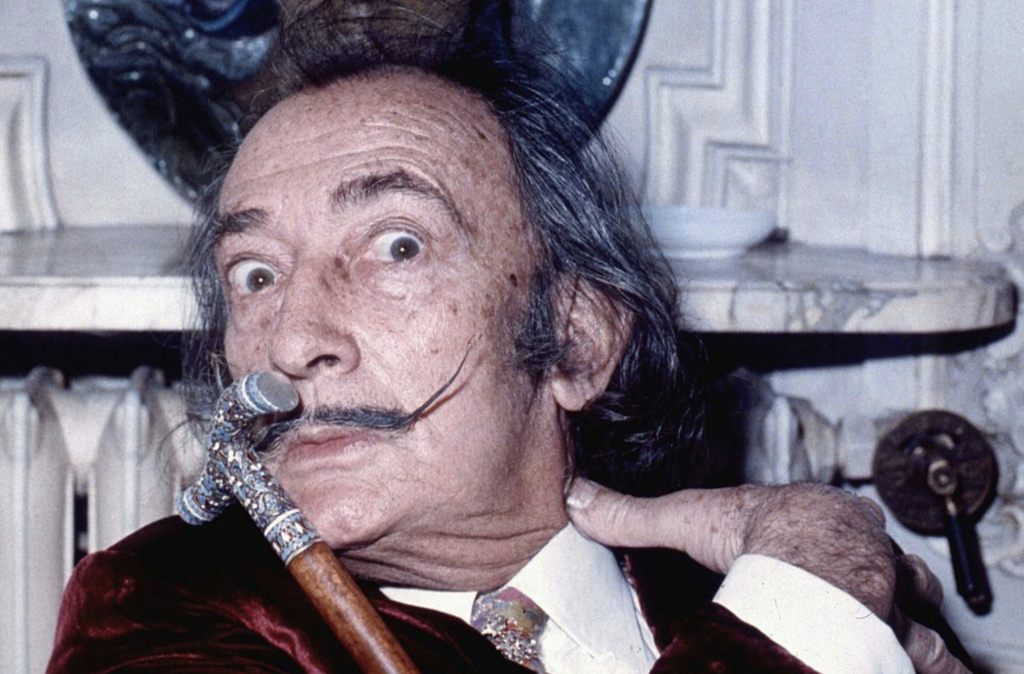When Salvador Dalí Gave a Lecture at the Sorbonne & Arrived in a Rolls Royce Full of Cauliflower (1955)

Salvador Dalí led a long and eventful life, so much so that certain of its chapters outlandish enough to define anyone else’s existence have by now been almost forgotten. “You’ve done some very mysterious things,” Dick Cavett says to Dalí on the 1971 broadcast of his show above. “I don’t know if you like to be asked what they mean, but there was an incident once where you appeared for a lecture in Paris, at the Sorbonne, and you arrived in a Rolls-Royce filled with cauliflowers.” At that, the artist wastes no time launching into an elaborate, semi-intelligible explanation involving rhinoceros horns and the golden ratio.
The incident in question had occurred sixteen years earlier, in 1955. “With bedlam in his mind and a quaint profusion of fresh cauliflower in his Rolls-Royce limousine, Spanish-born Surrealist Painter Salvador Dalí arrived at Paris’ Sorbonne University to unburden himself of some gibberish,” says the contemporary notice in Time. “His subject: ‘Phenomenological Aspects of the Critical Paranoiac Method.’ Some 2,000 ecstatic listeners were soon sharing Salvador’s Dalirium.”
To them he announced his discovery that “‘everything departs from the rhinoceros horn! Everything departs from [Dutch Master] Jan Vermeer’s The Lacemaker! Everything ends up in the cauliflower!’ The rub, apologized Dali, is that cauliflowers are too small to prove this theory conclusively.”
Nearly seven decades later, Honi Soit‘s Nicholas Osiowy takes these ideas rather more seriously than did the sneering correspondent from Time. “Beneath the simple shock value and easy surrealism, it becomes clear Dalí was onto something; the humble cauliflower is considered one of the best examples of the legendary golden ratio,” Osiowy writes. “Cauliflowers, rhinoceroses and anteaters’ tongues were to Dali essential manifestations of a glorious shape; deserving of an explicit depiction in his The Sacrament of the Last Supper,” painted in the year of his Sorbonne lecture. “Shape, the idea of geometry itself, is the unsung magic of not just art but our entire cultural consciousness.” Not that Dalí himself would have copped to communicating that: “I am against any kind of message,” he insists in response to a question from fellow Dick Cavett Show guest, who happened to be silent-film icon Lillian Gish. The seventies didn’t need the surreal; they were the surreal.
Related content:
When Salvador Dali Met Sigmund Freud, and Changed Freud’s Mind About Surrealism (1938)
Salvador Dalí Reveals the Secrets of His Trademark Moustache (1954)
Q: Salvador Dalí, Are You a Crackpot? A: No, I’m Just Almost Crazy (1969)
How Dick Cavett Brought Sophistication to Late Night Talk Shows: Watch 270 Classic Interviews Online
Based in Seoul, Colin Marshall writes and broadcasts on cities, language, and culture. His projects include the Substack newsletter Books on Cities, the book The Stateless City: a Walk through 21st-Century Los Angeles and the video series The City in Cinema. Follow him on Twitter at @colinmarshall or on Facebook.


